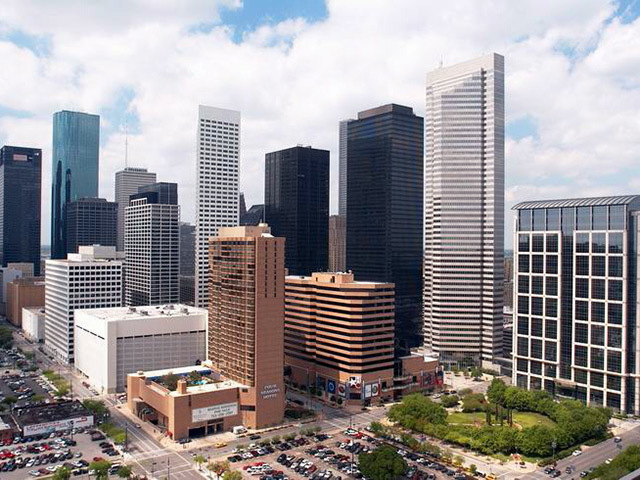
US oil prices tumbled from more than $100 a barrel in the summer of 2014 to less than $50 a year later, but that didn’t stop workers from flocking to Texas, the nation’s biggest energy-producing state.
Eight of the top 20 counties that gained the most population last year were in Texas. Four Lone Star metros—Dallas, Houston (Harris County, in the chart below), San Antonio (Bexar County), and Austin (Travis County)—collectively added more than 412,000 people from July 2014 to July 2015, according to Census data published Thursday.
Of those new residents, 63 percent had migrated from either elsewhere in the US or from other countries.
If energy prices tanked, why did the population keep growing?
A diverse labor market, fueled in part by Texas’s corporate-friendly tax structure, combined with relatively affordable housing and proximity to the Mexican border, has been drawing people to Texas for years.
Harris County, a global hub for the energy industry, has added more than 440,000 people since 2010 with annual increases averaging 2 percent over the past five years, according to historical data from the census.
The Dallas-Ft. Worth area, with such large corporate employers as AT&T and American Airlines, has grown too, with Dallas County adding 186,000 people over the same period.
All those new workers searching for homes have made housing more expensive, with the state’s median home price reaching $189,000 in January 2016, up 37 percent from five years earlier, according to data compiled by the Texas A&M University Real Estate Center.
Despite that increase, the state’s major housing markets look cheap compared with big cities on the coasts. In Harris County, it takes 22 percent of one’s average wages to cover mortgage payments and other costs of a typical home, according to data published Thursday by RealtyTrac.
Compare that with Los Angeles County, where those costs amount to 67 percent of wages, or Brooklyn, where the figure is 120 percent.
Cheap housing and the absence of a state income tax make the state popular with workers, while low corporate taxes and a reputation as a probusiness regulatory environment have persuaded large employers to relocate, said Jim Gaines, chief economist at the Texas A&M University Real Estate Center.
In Dallas, an ongoing boom in office construction is being led by companies—JPMorgan Chase, Liberty Mutual Insurance, and Toyota Motor Co.—whose fortunes are more closely linked to the national economy than to the energy sector.
Austin, meanwhile, is a popular location for such tech companies as Dell, IBM, and chipmaker Advanced Micro Devices. “So far, those cities aren’t showing those ill effects of the energy bust,” Gaines said.
Whether the state can keep attracting new residents following the collapse of energy prices is another question. Texas payroll gains have held steady despite oil-related cutbacks in positions, and the state’s jobless rate of 4.5 percent beats the national average of 4.9 percent, according to Labor Department data.
Even if the broader economy remains strong, the weakened energy industry will limit the state’s drawing power, said William Frey, senior fellow at the Brookings Institution’s Metropolitan Policy Program: “There will almost surely be a residual impact on Texas population growth in the next year.”